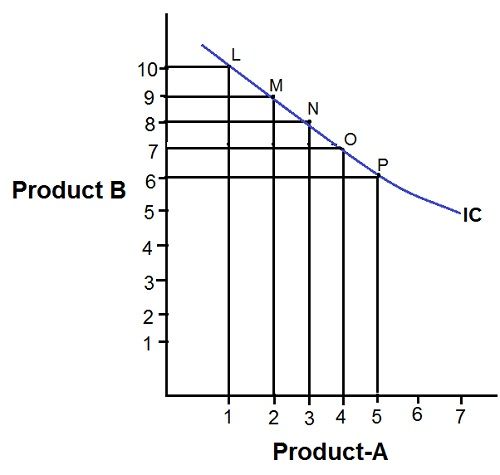Definition: The Indifference Curve shows the different combinations of two goods that give equal satisfaction and utility to the consumers. In other words, the indifference curve is the graphical representation of different combinations of goods (generally two), for which the consumers are indifferent, in terms of the overall satisfaction and the utility.
Assumptions of Indifference Curve
- Only two goods are taken into the consideration. It is assumed that the customer has to make a choice between two goods, provided their prices remains constant.
- It is assumed that the customer is not saturated with both the commodities and look for more benefits from these two, to have a higher curve to have more satisfaction.
- The satisfaction level cannot be measured; thus, the customer ranks his preferences.
- It is assumed that the marginal rate of substitution diminishes, as more units of one good have to be set off by the reduction in the units of the other commodity. Thus, the indifference curve is convex to the origin.
- It is assumed that the consumer is rational and will make his choice objectively to have an increased utility and the satisfaction.
The concept of Indifference curve can be further comprehended through an illustration below:
| Combination | Product-A (in number) | Product-B (in number) |
|---|---|---|
| L | 1 | 10 |
| M | 2 | 9 |
| N | 3 | 8 |
| O | 4 | 7 |
| P | 5 | 6 |
The consumer is indifferent between the Product-A and product-B, shown by 5 different combinations Viz. L, M, N, O, P. This means that combination L (10A+1B) gives an equal level of satisfaction and utility as (9A+ 2B), (7A+4B) and so on.. The IC curve shown in the figure above is generated by joining these combinations.
Properties of Indifference Curve


Mwidu Maurice says
Thanks whoever posts this work
TUKE Moses says
Well explained. Information is understandable by a student or researcher.